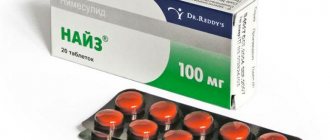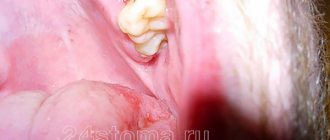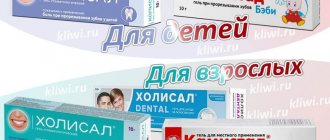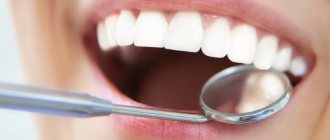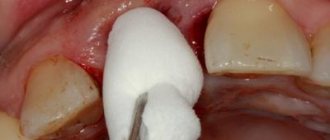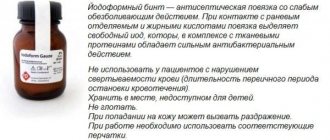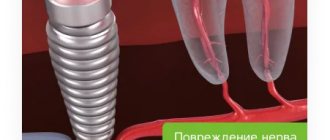Today, treatment of burns is a pressing problem. According to state statistics for 2022, at least 30,000 people suffered thermal or chemical injuries. This is one of the most common household injuries. However, you can often get a burn at work, where safety conditions are not met.
If burns occur, you must be able to provide proper first aid in a timely manner. How quickly you help yourself or the injured person will determine his further condition and the speed of treatment.
The human body is able to regenerate itself and remove minor burns without serious consequences for health. More serious burns require immediate medical attention to prevent complications. Such wounds need to be monitored to prevent infection and regularly treated with anti-inflammatory medications or anti-burn wipes.
If you find yourself close to a burnt person, you really need to know how to treat a burn, otherwise you will do more harm than good with your actions.
Causes of burns
A burn can occur due to exposure to:
- fire;
- hot liquid or steam;
- hot metal, glass or other objects;
- electric current;
- radiation (x-rays or radiation therapy);
- ultraviolet radiation (sun or solarium);
- active chemicals.
It is worth noting that the causes of burns may be different, but all types of such injuries are classified depending on the degree of damage caused and symptoms:
- First degree. This burn affects only the outer layer of the skin. The injury is characterized by redness, swelling and pain. The victim is given first aid and a short course of treatment is prescribed.
- Second degree. This burn leads to damage not only to the epidermis, but also to the underlying layer - the dermis. The lesion is characterized by redness, whitening or mottled skin, pain and swelling. It is possible to develop blisters from burns and severe pain.
- Third degree. With this type of damage, the fat layer under the skin is affected. Burnt areas of the body become charred, blackened or white. Third degree burns often disrupt the functioning of the nervous and respiratory systems.
First steps to neutralize thermal burns
- remove the victim as far as possible from the heat source;
- If clothing or equipment is smoldering, you should get rid of it immediately. If clothing is stuck to the skin, you must carefully cut it off or remove it;
- apply dry ice or use cold water to the damaged area;
- treat damaged areas of the body with burn ointment;
- In case of serious injuries, call an ambulance.
Neutralization of chemical burns
- Rinse the affected area with a strong stream of water. Under no circumstances should you treat a wound with oil.
- If a burn is caused by quicklime or sulfuric acid, it should be
- treat with a dry cloth, the use of water is unacceptable;
- apply a sterile antiseptic bandage.
There are situations when people get severe burns. Treating them outside the hospital requires special knowledge and skills. If a person does not have them, it is better to immediately consult a doctor.
Pain and burning of the tongue: how to treat?
Probably every gastroenterologist in his practice has encountered a patient with complaints of pain or burning of the tongue. Turning to this specialist in the first place is probably due to the following logical chain: the tongue is in the oral cavity, where the digestion process begins, which means that if a problem arises, you should visit a gastroenterologist. Old publications also come to the aid of patients and doctors of other specialties, in which chronic diseases of the digestive organs were considered as the causes of burning tongue.
But is it really that simple? Is pain and burning of the tongue a separate disease and who should treat it?
A little history and terminology.
Pain/burning in the tongue has many synonyms: glossalgia, glossodynia, stomatodynia, glossopyrosis, oral paresthesia, neurogenic glossitis, tongue neurosis, glossalgic syndrome. This condition is traditionally part of the so-called burning mouth syndrome or “burnt mouth syndrome,” in which pain/burning sensations are localized in various areas: tongue, upper palate, gums, lower lip, pharynx.
Burnt mouth syndrome (SMS) was first described back in 1880; in the 20th century, the term glossodynia, i.e., appeared. pain in the tongue, since unpleasant symptoms from the tongue were most common. This syndrome was first identified as a separate disease in 2004.
Almost all existing review articles and recommendations consider glossodynia within the framework of the SOP. General recommendations for the diagnosis and treatment of ROP may be applicable to the special case of glossodynia.
Definition
The International Association for the Study of Pain has designated glossodynia and oral burning as chronic pain, specifically “burning pain of the tongue or other mucous membranes of the mouth.”
Later, a detailed definition was given for ORS: “a burning sensation or sensation of altered sensitivity in the oral cavity, repeated daily for more than 2 hours a day for more than 3 months, without obvious causative lesions on clinical examination and examination.”
Epidemiology
Data on the prevalence of ROP and tongue pain/burning separately still vary from study to study. The average incidence of all cases of oral burning (including but not limited to tongue burning) is 0.1-3.7% of the population. Women suffer from this syndrome 2.5-7 times more often than men, especially often over the age of 60 and after menopause.
Common causes of pain and burning in the mouth.
There are two groups of reasons why patients notice a burning sensation in the mouth:
1) Primary (idiopathic), when there are no diseases of the oral cavity and other organs and systems, this will be the true SOR.
2) Secondary, caused by local (localized in the oral cavity) and systemic causes (autoimmune diseases, deficiency conditions, etc.)
Causes of secondary burning sensation in the mouth/burning tongue.
Possible causes of secondary burning sensation in the oral cavity are diverse and, oddly enough, are rarely associated with pathology of the digestive organs. A review published in 2022 on this problem identified the following conditions and diseases responsible for the occurrence of burning sensation in the mouth:
Local factors:
A. Diseases, conditions and damage to the oral cavity:
- fungal infection (eg candidiasis)
- lichen planus
- pemphigoid
- pemphigus
B. Trauma
1) Mechanical
2) Chemical
A. From the patient's side:
- toothpastes with abrasives
- use of mouth rinses with ethyl alcohol
- medications such as aspirin (applied to the sore tooth); over-the-counter medications containing phenols, peroxide, sulfuric acid
- vitamin C (citrus fruits)
- sour drinks
- lozenges and cough suppressants with high menthol content
b. From the dentist:
- Irrigation of the oral cavity with solutions containing methyl methacrylate, formaldehyde, formocresol, sodium hypochloride
- acrylic resin
- eugenol
3) Thermal: spicy or hot food or drink
C. Parafunctional habits
- Tongue sticking out, cheek biting, excessive tongue brushing
- mouth breathing
D. Xerostomia or impaired quality/quantity of saliva
- consequences of radiation or chemotherapy, Sjogren's syndrome, pathology of the salivary glands
- side effects of medications (antihistamines, antidepressants, diuretics, steroid hormones, non-steroidal anti-inflammatory drugs, amphetamines)
- smoking
E. Allergic reaction/contact hypersensitivity
- products, additives, flavors
- colorings and flavors from oral care products
- dental materials (nickel sulfate, cobalt, zinc)
System factors
A. Deficiency conditions: decreased levels of iron, zinc, folic acid, vitamins B1, B2, B6, B12
B. Endocrine pathology
- diabetes
- hypothyroidism
- hormonal disorders (changes in cortisol/sex hormone levels)
C. Autoimmune diseases
- Sjögren's syndrome
- lichenoid reactions
- systemic lupus erythematosus
D. Other diseases
- gastroesophageal reflux disease
- celiac disease
- multiple sclerosis
- Parkinson's disease
- Fabry disease
E. Medicines
- angiotensin-converting factor inhibitors
- antiretroviral therapy
F. Peripheral and central neuropathies
- diabetic polyneuropathy, neuropathy due to renal failure, neuropathy due to systemic connective tissue diseases, neuropathy due to HIV infection, postherpetic neuropathy, neuropathy due to chemotherapy
As can be seen from this huge list, most cases of burning of the tongue and in the oral cavity in general are caused by a dental problem/pathology, neurological, endocrine and autoimmune diseases. Gastroenterological causes (for example, gastroesophageal reflux disease) are rather the exception to the rule.
Primary burning sensation in the oral cavity (BOR) and its causes.
If there are no indications of secondary causes of burning in the oral cavity, most likely there is a true SOR. This is an independent disease, the cause of which is still unclear. In its development, the role of psychological factors and mental disorders, changes in the nerve endings and conductive nerve fibers of the oral cavity, as well as the central nervous system is assumed.
Clinical manifestations of ROP.
Symptoms that may bother patients with ROP are:
1) Pain and/or burning in the mouth of varying intensity. Some patients describe these sensations as tingling or irritation, as well as impaired sensitivity. The pain often occurs spontaneously, is often symmetrical and does not necessarily affect only one area. In the case of glossodynia, pain/burning is most often localized in the anterior 2/3 of the tongue, on its back, and lateral surfaces. The pain is minimal in the morning immediately after waking up, increasing in intensity throughout the day. Eating spicy, hot foods and drinks, as well as stress and fatigue increase the pain/burning sensation.
2) More than 70% of patients, in addition to pain/burning, note changes in taste, a decrease in its intensity, as well as the appearance of a foreign taste (bitter, metallic, or a combination of both). Most often, the sensation of sweet and salty tastes is reduced, and sour tastes are perceived more intensely.
3) Dry mouth (xerostomia) is noted by 46-67% of patients with SOP, while according to research data, an objective decrease in the amount of saliva is not observed in them.
4) Association with burning/pain from other mucous membranes has also been described in patients suffering from ROP. Most often this is a burning sensation in the rectum and genital tract. An alternative may be a feeling of dry mucous membranes (eyes, genital tract in women)
5) Night sleep disturbances are common (in 80% of cases) in people with SRS
6) Anxiety and depression are frequent companions of SOR and glossodynia separately. A meta-analysis of clinical studies showed that anxiety conditions increase the risk of developing RAS by 2.6 times, and depression by 3.2 times. Cancerophobia, social phobia, neuroticism, etc. are also often noted.
7) ODS is characterized by an association with other diseases that manifest as chronic pain: fibromyalgia, chronic back pain, chronic pelvic pain, irritable bowel syndrome, etc.
Treatment of SOR.
1) Patient information and support
Many patients with chronic oral burning and pain do not understand why their symptoms persist for so long. An important task of the doctor is to explain to patients with SRS the possible mechanisms of the formation of unpleasant sensations. Patients should be reassured that their symptoms are not imaginary or related to any form of cancer. This support will reduce anxiety, depression, fear and frustration, especially in individuals who have had previous unsuccessful treatment experiences.
2) Local therapy
Local use of clonazepam in the form of mouth rinses showed good results in reducing the severity of pain/burning in the mouth. There is encouraging evidence for the topical use of capsaicin (a chili pepper alkaloid) in low concentrations.
3) Systemic therapy
Tricyclic antidepressants, antidepressants from the group of serotonin and serotonin/norepinephrine reuptake inhibitors, clonazepam, and antiepileptic drugs (pregabalin and gabapentin) are actively used as drugs for the treatment of ORA. The use of alpha-lipoic acid has shown little effectiveness.
4) Non-drug psychotherapy
Given the frequent association of ODS with anxiety disorders, phobias and depression, non-pharmacological psychotherapy is an integral part of the treatment of this problem. Cognitive behavioral therapy, individual and group psychotherapy should be considered as methods of choice.
5) Physiotherapy and alternative treatments
Low-level laser therapy and acupuncture have been studied as methods for reducing pain. These methods were effective in some people with cerebral obstruction, but are not widely used.
Conclusion.
Identifying the causes of pain/burning in the oral cavity is a challenge for doctors of different specialties, but their friendly work allows us to solve the problem and improve the quality of life of patients.
Degree of burns
There are three main degrees of burns: first, second and third. The rating of each grade is based on the severity of the skin damage, with grade one being the most minor and grade three being the most severe.
Signs of damage look like this:
- first degree burns: the epidermal layer is damaged, the skin is red, slightly swollen;
- Second degree burns: blisters appear and skin peels off;
- third degree burns: tissue necrosis is observed, the skin becomes white, a crust forms;
There are also fourth degree burns. This degree includes all the symptoms of a third degree burn. The damage penetrates beyond the skin and spreads to the tendons and bones. It is in this case that scars remain after a burn.
Chemical and electrical burns require immediate medical attention because they can affect internal organs, even if external damage is barely visible.
The type of burn does not depend on the cause of its occurrence. A scald, for example, can cause all three types of burns—thermal, chemical, and physical—depending on how hot the liquid is and how long it remains in contact with the skin.
What it is?
The spots that appear on the tongue differ in color and size. It is important to understand what exactly is hidden under the usual redness on the tongue and is it worth worrying about?
The first thing you need to pay attention to is the color of the formation and the presence of plaque. As you know, the normal color of the tongue is pink. Also, an accumulation of small plaque may be observed on the organ, which is explained by non-compliance with generally accepted hygiene rules.
It is worth noting that plaque can also form due to various pathologies that affect the normal functioning of the gastrointestinal tract. In this case, it would be wise to adjust your daily diet.
As mentioned earlier, red spots can be of various types, so it is worth taking a closer look at the causes of this phenomenon.
Treatment after burns
If you receive minor injuries, you can try to neutralize them on your own. If you have knowledge of how to treat superficial wounds, you can handle this yourself.
Ointment or gel for burns from boiling water helps well with kitchen problems. If second or third degree burns have been sustained, hospital treatment is required. It should be done in a clinic under the supervision of doctors. The therapist will recommend how to treat the burn or how to treat a burn with blisters.
Diagnostics
Since red formations on the surface of the mucous membranes can occur due to various reasons and pathologies, diagnostic measures cannot be avoided in this case. First of all, the doctor conducts a visual examination of the affected areas and, if necessary, performs a palpation procedure.
The patient also needs to undergo additional examinations from specialists such as a gastroenterologist, allergist, immunologist, and so on. For a more accurate diagnosis, the doctor conducts a thorough examination of the tumor, clarifies the patient’s complaints and collects anamnesis.
During a visual inspection, the following indicators are determined:
- plaque;
- shade of the neoplasm;
- the presence of ulcers and erosions;
- structure of the affected area;
- presence of itching.
Read how to use iodine for rashes on the oral mucosa.
Chemical filling or light filling. More details here.
Skin restoration after a burn
What helps with burns is careful hygiene and regular wound care.
After injury, a blister immediately forms on the skin, filled with clear plasma, which can seep through the burned tissue. With proper treatment, inflammation and suppuration can be avoided, and regeneration will occur faster.
Within a few days, the blisters from the burns will begin to subside and peel off, and new skin will begin to form under the blister. At this time, the wounds may itch, but you should not touch the affected area - by the end of the first week the itching will go away on its own.
If the wound is neglected, a process of suppuration may develop. It may be accompanied by fever, sudden weakness and chills. With such a history, regeneration of the skin may take weeks. In this case, compacted growths and ridges are likely to appear.
How exactly to neutralize a chemical burn in the mouth?
Carbolic acid is well neutralized by glycerol.
Baking soda and water neutralize acidic compounds.
If alkali gets into your mouth, rinse the cavity with citric acid diluted in water.
If exposed to aggressive household chemicals, the mouth should be rinsed with cool running water.
It is important! Tongue burns take a long time to heal. Unfortunately, these tissues cannot be made motionless for a certain time; the tongue is constantly in motion. On average, it can take several weeks for the tongue to recover from injury.
Treatment of scars after burns
If you are interested in how to get rid of the external consequences of a burn, you need to know that in case of serious damage to the skin, the scar will remain in any case. Here you will need the help of a cosmetologist who will help restore the normal appearance of the skin.
Typically, for such an operation, a scar excision technique is used, after which several cosmetic sutures are applied to the tissue. When the sutures are removed, the damaged area is treated with ointments that prevent the formation of new scars on the skin.
For particularly difficult cases, for example, burns from boiling water, the laser resurfacing technique is used. Modern equipment allows you to completely remove scars and achieve perfect skin. If the severity of the burn is insignificant, chemical peeling with fruit acids is recommended.
Remedies for burns
How to treat a burn, and what kind of surgical assistance can be provided independently in the field or at home?
The use of creams such as Levomikol or Rescuer is guaranteed to help with minor injuries, such as briefly touching a hot pan. Dexpanthenol works very well for first degree burns. If the degree of damage is more serious, creams can only be used as a preventive measure and there is no point in relying on them.
Anti-burn products such as sprays or gels - for example, Burnshield Anti-burn Hydrogel - are more effective because they are dispersed and are better absorbed by the skin. These drugs combine two functions - anti-inflammatory and analgesic.
Buy
Buy
Buy
There is another type of treatment - special anti-burn dressings. They are recommended when the patient needs to be outdoors. Such dressings prevent dirt and dust from entering the wound.
To reduce the risk of general burns
At home, you can quite simply reduce the risk of burns; you just need to follow a few recommendations:
- Do not leave cooking or already cooked food on the stove unattended;
- frying pans are placed on the stove with handles towards its back;
- any hot liquid must be placed out of the reach of children and animals - boiling water is a common cause of thermal burns;
- Do not store electrical appliances near water;
- Do not cook in flammable clothing;
- You should block your child’s access to electrical and gas appliances;
- Protective caps must be put on sockets that are not in use;
- you should not smoke at home;
- smoke detectors require regular maintenance and battery replacement;
- the house or apartment must be equipped with a fire extinguisher;
- Chemical burns are caused by chemicals - they must be stored in a place inaccessible to children and animals.
